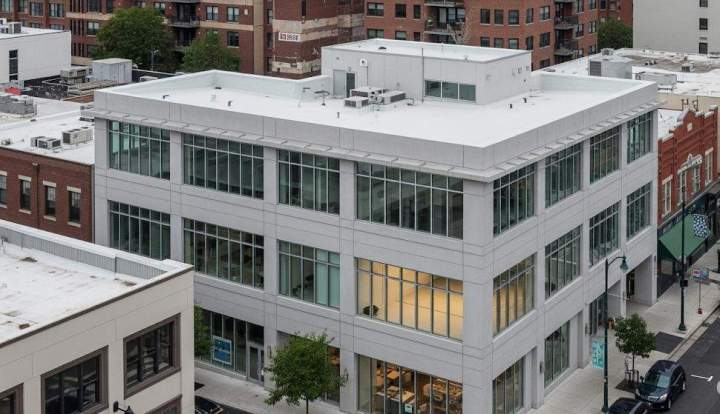Commercial Roofing: Key to Your Building's Sustainability and Performance
Commercial Linkeo / September 9, 2025

Understanding Commercial Roofing Options
Types of Commercial Roofing Systems
Commercial roofing comes in various forms, each designed to meet specific building needs and climates. The most common types include:
-
Built-Up Roofing (BUR): This traditional option consists of multiple layers of bitumen and reinforcing fabrics, providing excellent waterproofing and durability. It is particularly suitable for flat roofs.
-
Single-Ply Membrane Roofing: Comprising thermoplastic or thermoset membranes, this lightweight option offers flexibility and easy installation. TPO and PVC are popular choices due to their energy efficiency.
-
Metal Roofing: Known for its longevity and resistance to harsh weather conditions, metal roofing is an eco-friendly option that can be made from recycled materials and is fully recyclable at the end of its lifespan.
-
Green Roofs: This innovative approach incorporates vegetation atop the roofing system, providing insulation, reducing stormwater runoff, and enhancing biodiversity.
Selecting the Right System
Choosing the right roofing system requires an in-depth understanding of various factors, including climate, building design, and budget. Engaging with a professional roofing contractor can provide insights on the best materials and technologies suited for specific applications, ultimately leading to better performance and sustainability.
Enhancing Energy Efficiency
Insulation and Reflectivity
A well-insulated roof is crucial for minimizing energy consumption. Proper insulation not only helps maintain interior temperatures but also reduces reliance on heating and cooling systems. Reflective roofing materials can significantly reduce heat absorption, leading to lower cooling costs and a smaller carbon footprint.
Incorporating Solar Technology
The integration of solar panels into commercial roofing systems is becoming increasingly popular. Solar installations can transform an underutilized roof area into a productive space, generating renewable energy while reducing dependence on fossil fuels. In addition, many governments offer incentives for businesses that adopt solar technology, making it an attractive long-term investment.
Durability and Maintenance
Material Longevity
The lifespan of a roofing system directly impacts the sustainability of a building. High-quality materials can withstand harsh environmental conditions, thus reducing the frequency of repairs and replacements. Regular maintenance, including inspections and timely repairs, can extend the life of a roof, ensuring that it continues to perform efficiently.
Avoiding Common Issues
Commercial roofs are susceptible to various issues such as leaks, ponding water, and material degradation. Employing preventive maintenance strategies, such as routine inspections and prompt repairs, can help mitigate these challenges. Additionally, investing in advanced roofing technologies, such as moisture detection systems, can proactively identify and address problems before they escalate.
Sustainability Considerations
Eco-Friendly Materials
The choice of roofing materials plays a significant role in a building's overall sustainability. Opting for eco-friendly materials, such as recycled metal or sustainable bitumen, reduces the environmental impact associated with manufacturing and disposal. Furthermore, many modern roofing systems are designed for recyclability, allowing for a closed-loop lifecycle.
LEED Certification
For businesses aiming to achieve LEED (Leadership in Energy and Environmental Design) certification, commercial roofing can contribute significantly to meeting the necessary criteria. Elements such as energy-efficient roofs, green roofs, and the use of sustainable materials can bolster a building’s credentials and enhance its marketability.
Commercial roofing is more than just protection—it’s a critical factor in building performance. Sustainable materials and proper maintenance deliver long-term savings and resilience. Investing wisely in your commercial roof supports your business success.